Australia, the “Land Down Under,” is a vast and enthralling continent-country that beckons exploration and awe. Australia is a country of inexhaustible fascination, from its emblematic monuments to its distinct fauna and rich cultural history. In this blog, We set out on an exciting journey to discover the top 10 facts about Australia that capture the spirit of the country, vast diversity, and wonder that characterize this extraordinary land. Australia, located in the Southern Hemisphere, is more than just a country; it is its own universe.
From the ancient traditions and enduring cultures of its Indigenous peoples, whose ancestors date back more than 65,000 years, to the magnificent natural marvels that adorn its vast topography, this land offers a variety of compelling stories and experiences just waiting to be discovered. The Great Barrier Reef, an underwater beauty that stretches for thousands of kilometers, is not only the world’s biggest coral reef system but also a thriving ecosystem of diverse marine life. The Australian Outback, with its vast, ochre-colored deserts, exemplifies the austere and breathtaking majesty of the interior of the continent.
Sydney, Melbourne, and Brisbane, among others, are thriving centers of culture, innovation, and multiculturalism in Australia. Beyond these urban centers is a land replete with distinct flora and fauna, where kangaroos and koalas are only a fraction of the remarkable biodiversity. Join us as we disclose the top ten facts about Australia that make it an extraordinary destination, one that promises to ignite your curiosity and leave an indelible mark on your soul, whether you’re an intrepid traveler, nature enthusiast, or simply a curious mind-seeking to discover the wonders of this captivating continent-country.
Land Area: 7.688 million km2
Official language: No official language (And the main language is Australian English)
Currency: Australian dollar ($) (AUD)
Population: 26,713,205 (2024)
Capital: Canberra
Table of Contents
Facts about Australia’s History and Geography
History of Australia
- For over 65,000 years, several different indigenous peoples have lived in Australia, each with their own unique culture and language.
- The first Europeans to enter Australia were Dutch explorers in the 17th century, followed by Captain James Cook in 1770.
- Beginning in 1788 with the arrival of the First Fleet under Captain Arthur Phillip, British colonization of Australia began with the establishment of a prison colony in Sydney.
- Between 1788 and 1868, more than 160,000 British convicts were sent to Australia, mostly to New South Wales and Van Diemen’s Land (now Tasmania) as a form of punishment.
- Significant gold discoveries in New South Wales and Victoria in the middle of the 19th century sparked a gold rush, which in turn attracted a surge of immigrants and fueled economic expansion.
- On January 1, 1901, the six individual colonies that made up Australia joined together to establish the Commonwealth of Australia, and thus Australia became a federation.
- Australia’s involvement in both World Wars was significant, and the country’s relations with the United Kingdom and the United States were strengthened as a result.
- Australia’s indigenous people were granted citizenship and the right to have federal government protections legislated for them in a referendum held in 1967.
- Australia’s multicultural society is a direct result of the large number of individuals who moved there after World War II as a result of the country’s liberal immigration laws.
- Movements for Indigenous land rights in the 1970s and 1980s resulted in the restoration of certain ancestral lands to their original inhabitants.
- Since the 1990s, Australians have discussed replacing the monarchy with a republic, but in 1999, a vote was found against the idea.
- Australia’s economy grew steadily for a while, helped along by its exports of minerals and other natural resources.
- Droughts, wildfires, and the health of the Great Barrier Reef are just a few examples of the environmental threats that Australia must contend with.
- Current Events: Immigration policy, climate change, Indigenous reconciliation, and Australia’s role in the Asia-Pacific region all pose challenges for modern Australia.
Geographical Facts of Australia

- Australia is completely south of the equator, in the Southern Hemisphere. In terms of landmass, it is the sixth biggest country in the world and the largest island in the globe.
- Australia is hemmed in by three oceans: the Indian to the west, the Pacific to the east, and the Southern Ocean to the south.
- New South Wales, Victoria, Queensland, South Australia, Western Australia, and Tasmania are the six mainland states, while the Australian Capital Territory and the Northern Territory are the two largest external territories.
- The capital of Australia is the city of Canberra, which is situated in the Australian Capital Territory. However, Sydney has more residents than any other city in Australia.
- Australia’s landscapes vary greatly, from the harsh Simpson Desert and Great Victoria Desert to the lush Daintree Rainforest in Queensland. There are mountain ranges, long stretches of shoreline, and wide open spaces.
- The Outback is the common name for the sparsely inhabited heartland of Australia. The region is dominated by dry deserts including the Great Sandy Desert and the Simpson Desert.
- The Great Barrier Reef is the biggest reef in the world and is found in Queensland, Australia. It’s on the map and a World Heritage Site, so you can see it from orbit.
- Uluru, often known as Ayers Rock, is a gigantic sandstone rock structure in central Australia. It’s a UNESCO World Heritage Site for good reason: the Indigenous Australian community places great cultural significance on this location.
- South Australia’s Flinders Ranges are old mountains with breathtaking scenery, deep gorges, and unusual rock formations.
- The Murray-Darling River system is Australia’s longest and most important river system and one of several major rivers in the nation.
- Australia’s climate varies greatly from north to south, from tropical to moderate. Due to its enormous extent, it also contains dry and semiarid zones.
- Australia has a wide variety of flora and fauna, including kangaroos, koalas, and the infamous platypus. A large number of indigenous species may be found there as well.
The Top 10 interesting facts about Australia are listed below.
01. The Great Barrier Reef
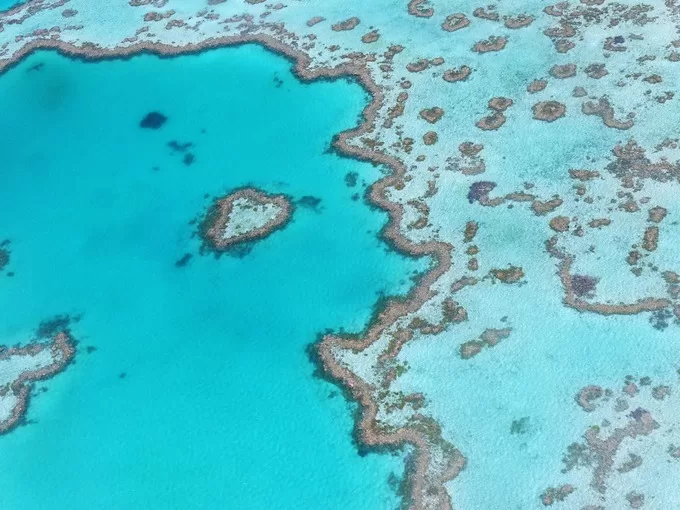
The Great Barrier Reef, an underwater masterpiece that runs for more than 2,300 kilometers along Australia’s northeastern coast, is a rare and priceless treasure of natural splendor and biological richness. There are hundreds of islands and cays made of coral, and the seas around them are teaming with life. This is no ordinary coral reef; it is a vibrant ecosystem unlike any other. This underwater paradise is a UNESCO World Heritage site that can be seen from space. It is home to a wide variety of fascinating marine life, including clownfish, turtles, and beautiful manta rays.
The Great Barrier Reef is more than just a beautiful sight; it is also an essential component in maintaining the health of the world’s seas by providing a safe haven for innumerable marine species and functioning as a natural barrier against the effects of global warming. However, this delicate marvel is threatened in several ways, such as coral bleaching due to increasing water temperatures, pollution, and overfishing.
Not only does Australia have a commitment to preserve this global resource for future generations, but all of humanity has a responsibility to protect one of the most extraordinary ecosystems on the planet. The Great Barrier Reef in Australia is a striking example of the wonders of nature and the urgency of human conservation efforts to secure their survival.
02. Sydney Opera House:

The Sydney Opera House in Australia is an international emblem of artistic and cultural achievement. The Sydney Opera House is more than just a beautiful theater on the water’s edge of Sydney Harbor; it’s a symbol of human creativity and innovation. Its unusual shells, shaped like sails, are an example of cutting-edge architecture that has attracted many admirers. The stunning skyline of Sydney serves as a background for the rich tapestry of creative expression that takes place inside its borders, from opera and ballet to theater and concerts.
Designed by the forward-thinking Danish architect Jrn Utzon, the Sydney Opera House is more than a performance space; it is a haven for the arts that encourages experimentation and new ideas. It captures the spirit of Australia’s diverse cultural landscape and serves as a reminder that the power of art lies in its ability to unite people from all walks of life via the shared language of creativity. It is a monument to the strength of the human imagination that the Sydney Opera House has stood the test of time and continues to inspire and enchant visitors.
03. Tasmania has the cleanest air in the world

Tasmania, an Australian state often known as the “Island of Inspiration,” has the cleanest air in the world. Located to the south of mainland Australia, this island state is home to very clean air. Because of its remote location, lack of major industries, and plenty of undeveloped land, the area enjoys very clean air. Here, you may take a deep breath and enjoy air so clean that it almost seems like a present from Mother Nature. Tasmania’s isolated environments, with their rocky mountains, thick forests, and pure waterways, help to provide this high standard of air quality.
Tasmania is a refuge for environmental protection, and the state’s dedication to protecting its natural riches is reflected in the state’s relatively pollution-free sky. For those who are given the opportunity to come, this is not just about breathing clean air; it is an immersion into some of the world’s most pristine ecosystems, where the air is not only pure but also serves as a concrete reminder of the need of maintaining our planet’s beautiful regions. In a world where pollution is on the rise, Tasmania’s pristine air is a welcome reminder of what careful conservation can accomplish.
04. The Great Ocean Road is the world’s largest war memorial
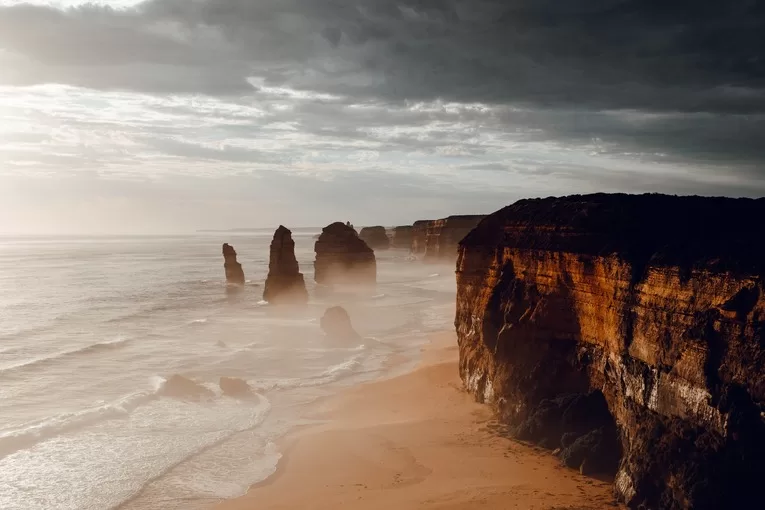
The Great Ocean Road in Australia is not just one of the world’s most beautiful roads, but also the largest war memorial in the world. Dedicated to the commemoration of the men and women who served and died in World War I, this spectacular coastal road stretches for more than 240 kilometers along the southern coast of Victoria and was constructed by veterans between 1919 and 1932. Traveling along this breathtaking route, through rugged cliffs, verdant rainforests, and recognizable limestone structures like the Twelve Apostles, not only provides a visual spectacle but also serves as a reminder of the significant history that led to the road’s development.
With its breathtaking views of the Southern Ocean, the Great Ocean Road is a living testament to the strength, solidarity, and honor of those who fought in battle. This trip encapsulates the sense of recollection and thankfulness that characterizes Australians’ collective memory of their servicemen and women via its seamless blending of natural beauty and painful history. As a result, a trip along the Great Ocean Road is more than simply a drive; it’s a meaningful and humbling experience that allows visitors to honor the legends of the past while basking in the splendor of the present.
05. The Australian Alps receive more snow than the Swiss Alps.
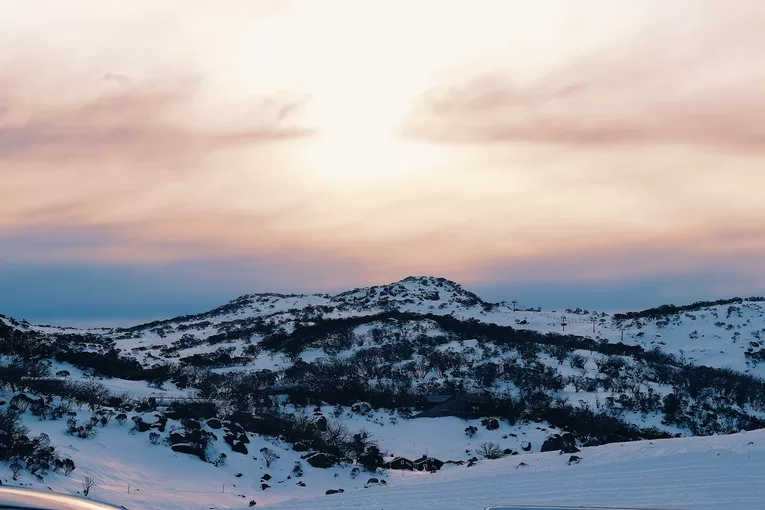
The Australian Alps, located in the southeastern part of the continent, are surprised with their yearly snowfall total, which exceeds that of the more well-known Swiss Alps. This meteorological phenomenon illustrates the wide variety of ecosystems seen in Australia. Despite Australia’s reputation for warm weather and sandy shores, the country’s southeast alpine area is home to snowy winters. The Australian Alps, which include the continent’s highest peak, Mount Kosciuszko, become a winter wonderland when they are blanketed with snow. This white beauty is the result of the region’s proximity to and interaction with cold fronts from the Southern Ocean, both of which are only seen in the Southern Hemisphere.
The end result? The slopes are always covered with snow, and the snowfall is continuous and heavy, making it an ideal location for skiers and snowboarders. As surprising as it is, the thought of world-class skiing and snowboarding in a country more often associated with sun and surf is even more alluring in light of this discovery. The Australian Alps are an enticing symbol of Australia’s geographical variety; they promise exciting alpine experiences among breathtaking scenery, and they further establish the country as a place where visitors may anticipate the unexpected.
06. Fraser Island is the largest sand island in the world

Fraser Island, off the coast of Queensland in Australia, takes great pride in being the biggest sand island in the world. This island paradise is an impressive testimony to the power of nature, stretching over 120 kilometers in length and covering an area of around 1,840 square kilometers. The distinctive shape it has taken over the course of thousands of years is the consequence of sand gradually building up on a prehistoric volcanic plateau. Spectacular displays of nature’s grandeur may be seen in a variety of forms on Fraser Island, from verdant rainforests with towering trees to pristine freshwater lakes like Lake McKenzie.
Fraser Island is distinctive for its apparently endless stretches of pure white sand beaches and lush, verdant greenery. Besides its stunning scenery, this World Heritage site is also home to a wide variety of animals, including the elusive dingo. Four-wheel driving through sandy paths, swimming in crystal-clear seas, and learning about the island’s rich Indigenous history are just a few of the many ways visitors may experience Fraser Island’s natural splendor. As a symbol of the sublime beauty and ecological relevance that nature is capable of, it is a must-see for every traveler visiting Australia in search of the remarkable.
07. 90% of Australians live on the coast
One of the most interesting facts about Australia is that almost all of its citizens live in its coastal regions. This concentration along the coast exemplifies the attractiveness of Australia’s beautiful seaside settings, which provide not only amazing scenery but also convenient access to essential resources like water, commerce routes, and leisure activities. Sydney, Melbourne, Brisbane, Perth, and Adelaide are just a few of Australia’s main cities that can be found along the shore. This is because Australia has always relied heavily on the sea for commerce and transportation. As an added bonus, the shore enjoys a more agreeable environment than the harsh interior does, making it a more desirable area to dwell.
Unfortunately, this connection to the shore also brings to light the threats presented by climate change and increasing sea levels, sparking conversations about sustainability and the need to conserve coastal communities and landscapes for future generations. Essentially, the fact that 90% of Australians call the coast home demonstrates not just the country’s profound connection to the sea, but also the boundless opportunities, both recreational and economic, that are available to those who choose to live, work, and play by the water’s edge.
08. Australia has more than 10,000 beaches

Australia is home to an astounding geological treasure: more than 10,000 beaches, adding to the country’s already impressive list of natural attractions. From the pristine white sands of Whitehaven Beach in Queensland’s Whitsundays to the untamed shores of Cable Beach in Western Australia, the beaches that dot the country’s extensive coastline display a wide range of personalities. Surfing the world-famous waves of Bondi Beach in Sydney or diving among the bright coral reefs of the Great Barrier Reef are just two of the many unique experiences that can be had at Australia’s many beaches, all of which have their own stories to tell and were molded by the great forces of nature.
The shores of Australia are a haven for people in search of peace and quiet by the water, a playground for adventurers, and a utopia for beach bums. Australia’s beaches are more than simply a tourist attraction; they play an important part in the country’s culture by supporting local economies, forging emotional attachments to the sea, and uniting locals. Australia’s coastline is an alluring lure for tourists and residents alike due to its variety, wonder, and natural beauty, and there seems to be no limit to the number of beaches to discover.
09. 80% of the animals are unique to Australia

Australia, known as the “Land of Uniqueness” due to the fact that 80 percent of its animal species can be found nowhere else on Earth, is a standout on the global stage. Millions of years of isolation and evolution have produced a unique and diverse array of living forms in Australia, and this extraordinary biodiversity is a direct outcome of this process. These indigenous animals, ranging from the well-known kangaroo and koala to the mysterious platypus and echidna, have adapted to a broad variety of environments, from barren deserts to lush rainforests.
Australia is home to a wide variety of birds and animals, including the emu and lorikeets, which are both endangered and the deadly snakes and fascinating bearded dragons, which are also native to the country. These extraordinary numbers of rare species are a testament to the value of Australia’s conservation efforts and a reminder of the fragility and beauty of our planet’s ecosystems. Australia is a refuge for nature lovers and a vital contributor to world biodiversity due to its dedication to protecting its magnificent wildlife and the variety of ecosystems in which they thrive.
10. About 2.5 kilometers of Uluru is hidden below the surface
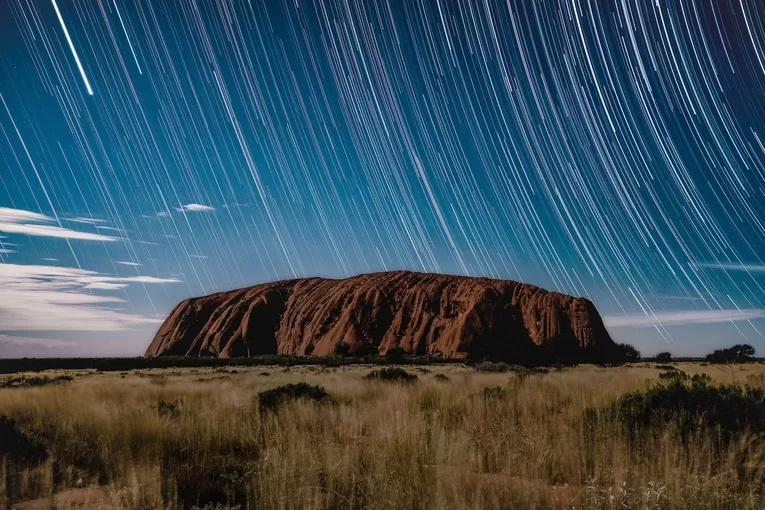
Australia’s famous Uluru, a massive sandstone monolith in the country’s Red Centre, is not simply a breathtaking sight above ground; it also holds a hidden mystery under its awe-inspiring surface. About 2.5 kilometers of this magnificent granite structure lie buried under the surface, exposing a geological marvel that is as bit as impressive as its outward appearance. Uluru’s underlying depths, formed over millions of years via the complicated process of erosion, are a wonder of natural architecture, testifying to the forces of nature that have sculpted it into the majestic monument we see today.
The tunnels, caverns, and other subterranean structures it contains are a monument to the resilience of geological processes throughout time. Indigenous peoples revere Uluru for its spiritual and cultural importance, but the secret underground world underneath the rock gives a fascinating peek into the long history of this region. Uluru’s surface may get all the attention, but its large chunk hidden under the earth’s surface is a reminder that there is usually more to a natural marvel than meets the eye and a call to explore the secrets of our planet’s geological past.
Here the some interesting and fun facts about Australia:
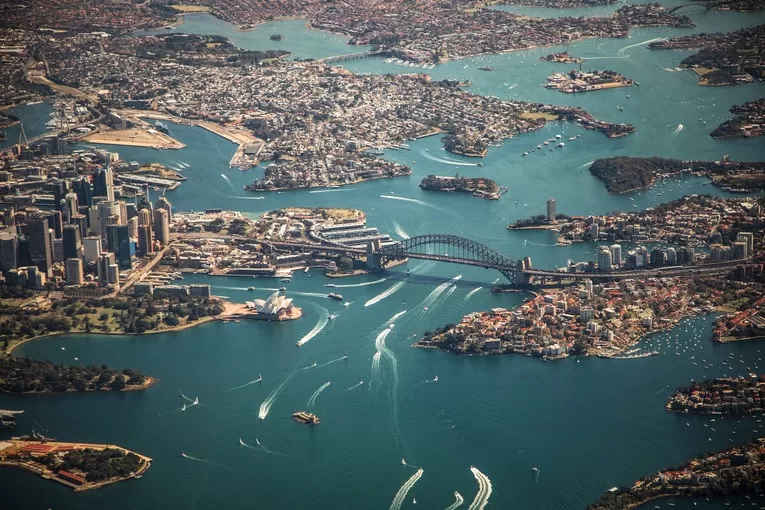
- Ancient Indigenous Culture: With Indigenous peoples having lived in Australia for over 65,000 years, the country is home to one of the world’s oldest continuous civilizations. The country’s identity is deeply rooted in its rich cultural heritage, including art and storytelling through oral tradition.
- “The Outback”: The Australian Outback is a rough and remote region that takes up a large chunk of the nation. Famous landmarks include the area’s red sand dunes and unusual rock formations like Uluru (Ayers Rock), which is of great spiritual importance to the indigenous people who live there.
- History of the Gold Rush: Cities like Melbourne and Sydney exploded in population and development in the 19th century because of Australia’s gold rush. The country’s history and culture will always reflect the events of this time period.
- The World’s Oldest Fossils: The Pilbara area of Western Australia is home to some of the oldest fossils ever found on Earth. These geological features have been around for a long time and can tell us a lot about how life on Earth began.
- World-Class Cities: Sydney, Melbourne, Brisbane, and Perth are just a few of Australia’s vibrant and multicultural cities. Each city has its own distinct personality, with a varied array of historical attractions, modern infrastructure, and amazing natural beauty.
- The World’s Longest Fence: The longest fence in the world, the Dingo Fence, can be found in Australia and spans over 5,600 kilometers (3,480 miles). It was constructed to prevent dingoes (wild dogs) from gaining access to agricultural areas in southeast Australia.
- A Sunburnt Country: Dorothea Mackellar’s “My Country” poem is a classic in Australia; it characterizes Australia as a “sunburnt country.” Due to the high incidence of skin cancer and the intense sunlight on the continent, it is crucial that residents take every precaution to protect themselves from the sun.
- Eucalyptus Forests: In Australia, eucalyptus trees are so common that they are sometimes referred to as “gum trees.” These trees not only provide essential homes for koalas and other animals but also have a unique fragrance.
- Surfing Capital: Bells Beach in Victoria and Bondi Beach in Sydney are two of Australia’s popular surf destinations. Here, surfing is more than a hobby; it’s ingrained in the culture.
- Indian Pacific train has the longest straight section of train track in the world: Several breathtaking train trips may be found in Australia. The Indian Pacific runs from Sydney to Perth across the nation, passing through the beautiful Blue Mountains and then the desert and the Flinders Ranges.
- UNESCO World Heritage Sites: Australia is home to a remarkable 20 sites recognized as World Heritage by UNESCO, including the Great Barrier Reef, Uluru-Kata Tjuta National Park, and the Sydney Opera House.
Australia is a magnificent and varied diamond in the great fabric of our globe, and these top 10 facts have shown just a small portion of its rich and interesting nature. Australia’s natural beauty and cultural diversity have long captivated visitors, from the continent’s long-established Indigenous civilizations to the country’s jaw-dropping Outback and Great Barrier Reef landscapes. The country’s amazing geographical variety is on full display in its possession of the biggest coral reef, the largest sand island, and a startling quantity of snowfall in its alpine areas. Its unusual fauna, including kangaroos, koalas, and the elusive platypus, is evidence of the rich biodiversity that can be found in its more isolated regions.
Furthermore, Australia’s cosmopolitan cities and gastronomic pleasures pay respect to its place as a global crossroads via its cultural melting pot. These top ten facts are only the tip of the iceberg when it comes to the fascinating history of Australia, a country that has long been a magnet for adventurers, scientists, and curious minds because of its vast natural beauty and enduring dedication to preservation efforts. Located in the middle of the Southern Hemisphere, Australia beckons visitors to explore its many facets and fall in love with the “Land Down Under” for the rest of their lives.



Pingback: Top 10 country with the Best Quality of Life 2024 - Factoza
Pingback: Top 10 Countries with the Most Olympic medals of all time - Factoza